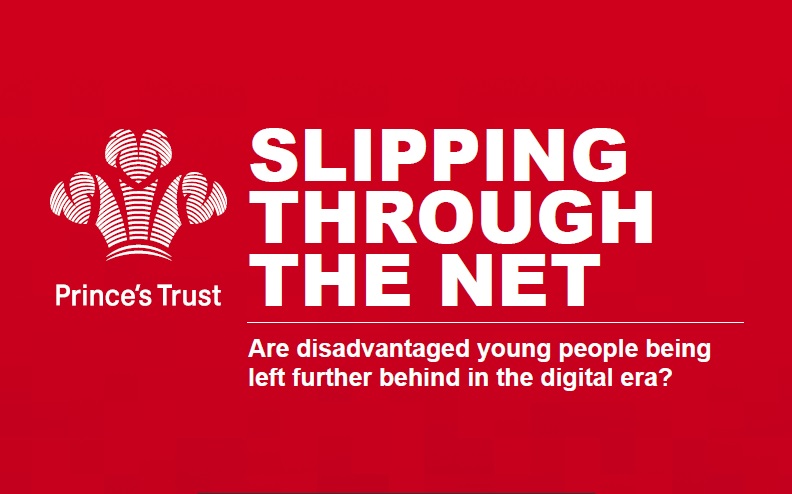 Lyndsey Burton, managing director of the UK-based consumer price comparison site Choose, argues that without foresight and determination from the UK Government for a broader, system-wide change, broadband will continue to be unaffordable for many and those most at need will remain disconnected.
Lyndsey Burton, managing director of the UK-based consumer price comparison site Choose, argues that without foresight and determination from the UK Government for a broader, system-wide change, broadband will continue to be unaffordable for many and those most at need will remain disconnected.
Social broadband objectives
The escalating cost of living crisis in the UK is adding pressure to the broadband industry to ensure people don’t disconnect as household finances are pushed beyond their limits. Social tariffs were originally designed to ensure service is made universally available by offering an affordable option for people on low incomes. Yet, the current approach to social broadband tariffs by the Government and Ofcom is creating confusion around what social tariffs and their objectives are. For example, while telephony has had a regulatory universal service obligation since 2003, the Government is continuing to leave digital behind by allowing social broadband to remain voluntarily provided by the market.
By relying solely on the market to provide affordable tariffs, price setting is restricted by what private businesses can achieve, as BT pointed out when they said they were “offering BT Home Essentials at cost price” and so can’t make it any cheaper. Ofcom’s own research has already highlighted that an equitable, and arguably affordable, price for those on the lowest incomes in receipt of Universal Credit (the main eligibility benefit for social tariffs) is around £4 to £7 per month. Yet, despite this, social broadband tariffs are typically priced around £15 to £20 per month, making them far from accessible.
This restricted market pricing is leading to social tariffs becoming merely a tool for retentions departments to offer existing customers struggling to afford their current tariff a slightly cheaper option. While this undoubtedly meets a need, it disregards people on the lowest incomes who can’t afford broadband even at cost price.
There are also questions being raised around whether existing eligibility criteria is excluding people with affordability issues from the social tariffs designed to help them. While social broadband tariffs have so far been made available only for those in receipt of means-tested benefits, Community Fibre, a London based full fibre provider, stepped away from the typical eligibility criteria when they made their essential £12.50 tariff available to anyone who financially needs it, arguing that they “think it is wrong to be made to prove eligibility”.
The original objectives of social broadband as set out in the 2002/22/EC Directive (now part of the Communications Act 2003), make clear that the purpose of social tariffs is to ensure affordability for everyone, considering both economic conditions and individual household expenditure. It’s not designed, as it seems to have become, to exclude those in the lowest income groups on the basis of affordability (or even eligibility), because market funding at the correct level is either unachievable or unsustainable, or both.
It seems clear that social broadband tariffs require public funding and not doing so only leaves broadband out of reach for those most at need of help. And what is most concerning is that by allowing this to continue we could see the creation of a public perception that broadband is simply not for the poorest in society.
Universal service must ensure autonomy
During some periods of the Covid-19 pandemic we saw mobile providers offering free data boosts, as well as zero rating certain websites like the NHS. The Good Things Foundation’s National Databank also offers free mobile data through community partnerships, which they self-describe as “like a ‘food bank’ but for Internet connectivity data”.
These initiatives are undoubtedly incredibly helpful as short-term solutions, especially for those at risk of financial exclusion, and should continue to be made available more widely. However, in terms of Internet access as a universal service, mobile handouts shouldn’t become a long-term stopgap solution that allows home broadband to remain unaffordable for the poorest households.
It’s vital that those on the lowest incomes aren’t excluded from accessing home broadband simply because the current mechanism of market funding doesn’t allow the tariffs to be accessible (read: cheap) enough.
Everyone deserves the autonomy of a decent home broadband connection, allowing them to fully participate in a digital society and carry out their daily lives without impediment. Children should be able to carry out their school homework on a computer without having to share and struggle with a mobile device, as was commonly reported during the home-schooling periods of Covid lockdowns. Hopefully this will be appreciated by the new Secretary of State for Digital, Culture, Media and Sport, with her extensive background in education.
Solving digital exclusion
There are growing calls from both consumer groups and ISPs to reclassify broadband as an essential service under the VAT system. This would see a reduction in VAT from 20 to 5%. However, while on the surface this seems financially beneficial for consumers, there some problems with this suggestion.
Broadband pricing is generally very competitive with several deals costing less than £20 per month, meaning ‘affordable’ social tariffs are already priced around the same as the cheapest packages for switching customers. A blanket cut in VAT on broadband therefore is arguably a waste of public revenues and likely to be largely absorbed by providers.
Alternatively, restricting the VAT cut to just social tariffs could be an effective short-term way of bringing the cost of social tariffs down, especially if the cut is zero rated. However, questions have already been raised about how this could be implemented practically by HMRC and ISPs. And I would argue that a 15% or even a 20% cut in the price of social tariffs falls short of what is needed.
There is also a risk that cutting VAT on broadband as a standalone solution undermines the ability to bring in a social levy on bills in the future, in the same way the energy market works, as it could then be argued it would unfairly burden existing customers and risk increasing inflation. And as Marc Allera, BT’s Consumer CEO said, “Funding or subsidies for social tariffs could make a very significant difference, in the same way that winter fuel payments help vulnerable people with their energy costs.”
Redefining broadband as an essential service in line with other utilities therefore, should be done so comprehensively and not with piecemeal solutions. Simultaneously cutting VAT and introducing a social levy on bills – as I put forward here – would enable social tariffs to become publicly funded, whilst the reduction in VAT could be used to offset any burden on existing customer bills and mitigate any impact on inflation. This could be the simplest and most straightforward approach to solving digital poverty.
Tying the reduction in VAT to a ringfenced fund for digital inclusion, as I originally proposed, has the benefit of mirroring both the cost of broadband provision and inflation. This would also protect it from future budget cuts that could lead to digital inclusion initiatives becoming underfunded again in the future, and if the Government want to push the take-up of social tariffs from the current 1.2%, protected funding is important.
However, if a ringfenced fund draws little appetite due to its likeness to a hypothecated tax (despite the UK now having one), a simpler approach could be to implement the changes simultaneously, but separately. This would allow the reduction in VAT to offset the implementation of a social levy, protecting both existing customers and inflation, whilst also providing the flexibility for the social levy element to be reduced in the future as digital exclusion is remedied. In this way, it’s no more a hypothecated tax than the social levy and 5% rate of VAT that exists in the energy market.
Broadband for all
While many broadband providers are going above and beyond to help alleviate digital poverty, the Government’s approach to leaving social broadband provision as voluntary has become outdated as broadband is now arguably as essential as a home telephone line. Regulating social broadband tariffs would both create consistency across the market as well as ensuring the foundation for public funding, allowing them to be priced low enough to guarantee connectivity for those they are designed to reach.
We must make sure the objectives of universal service are achieved and that everyone is provided with affordable home Internet access. To continue expecting a free market to fulfil this is to continue to exclude people and children from participating in; benefiting from; and attaining in our digital society.
This article reflects the views of the author and not those of the Media@LSE blog nor of the London School of Economics and Political Science.
Featured image: Photo by Compare Fibre on Unsplash





